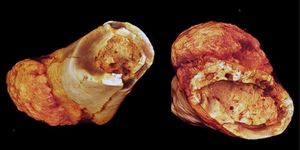A compelling new study from the Australian National University has uncovered hundreds of proteins scientists never knew were binding to RNA and protein surfaces scientists didn’t know were even capable of binding to RNA. Why is it significant to identify new types of proteins binding with RNA? It’s because they already have known functions in addition, what scientists call their “day jobs.” Now researchers want to know why they are also binding to RNA.
The researchers from the new study, published recently in
Cell Reports, are focusing on studying RNA-protein interactions because of the central role RNA-binding proteins play in the daily function of the human genome. These interactions “govern" genome function in all organs of the body, but scientists from this study were especially interested in RNA-protein interactions in the heart, hoping that their research could lend some clues as to the next step to the cure for heart disease.
Like in the United States, cardiovascular disease is a leading cause of death in Australia. The study authors wished to study the human genome relating to the heart in order to fully understand how active RNA-binding proteins in the heart may protect it from disease or increase its vulnerability. “We have come to think of the genome as an RNA-making machine,” lead researcher Professor Thomas Preiss said.
Using “innovate proteomic methods,” Preiss and his team uncovered thousands of RNA-binding proteins, observing so closely that they could “catch proteins in the act” of binding to RNA. Additionally, they were able to detect what specific part of the protein was in contact with nucleic acid. Hundreds of new proteins and protein surfaces were implicated in the binding with RNA.
“We started with this project thinking that we [would] find new proteins that help the RNA to function,” said research team member Dr. Yalin Liao. “But we are now also considering that in some cases there could be RNAs that help the protein to function.” According to Liao, this (potentially) mutually beneficial relationship pertains to cardiovascular disease research because it could provide “many new angles for research and could ultimately lead to a cure for heart disease.”
Sources:
Australian National University









